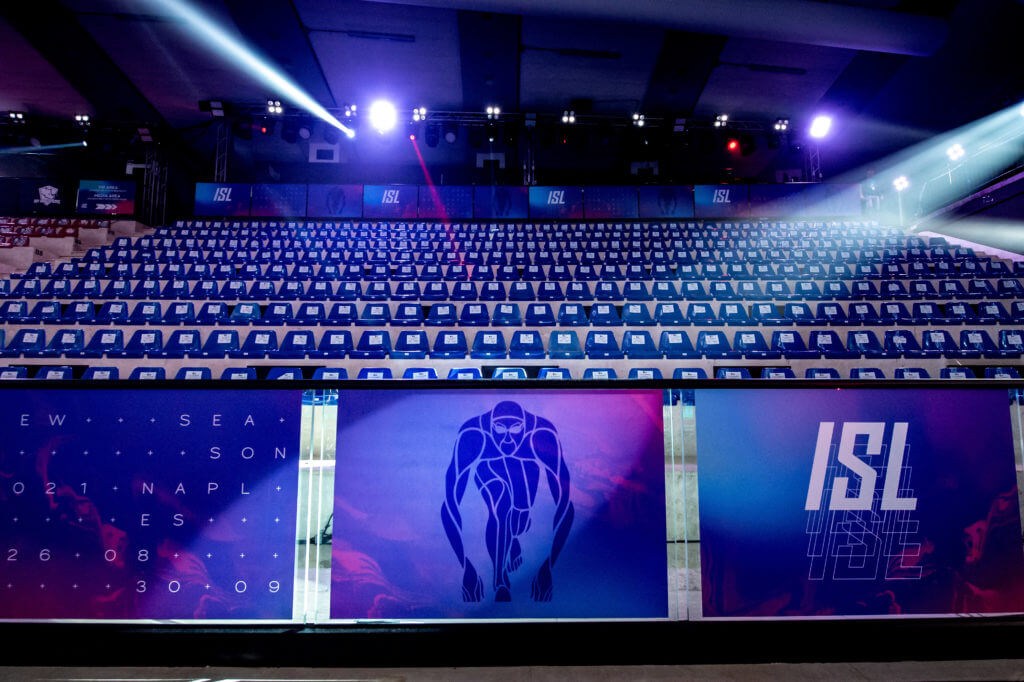What’s Next For the International Swimming League?

What’s Next For the International Swimming League?
The 2022 international swimming calendar has been extremely busy, and there are still a number of high-level competitions before the year draws to a close. The FINA World Cup starts in October and has three stops in Berlin, Toronto and Indianapolis. Additionally, the Short Course World Championships are scheduled for December 13-18 in Melbourne. The postponement of Season Four of the International Swimming League (ISL) until 2023, however, has left a gaping hole in the international swimming calendar.
Athletes and numerous national governing bodies complained about the cramped schedule coming off the back of the Covid-19 pandemic. The regular season was due to run from early June until the end of October. This timeframe clashed with several international long course championships, with several meets being deferred to 2022 because of the pandemic.
Season Four of the ISL was going to leave many athletes choosing between representing their country at major international championships or competing in the ISL, which had given many swimmers’ careers a new lease on life with its financial rewards and short-course meters setup. It was due to start on June 3 and would have consisted of 24 matches. This approach would comprise a regular season, a wildcard match, playoffs and a final at the end of December. Instead, the fourth season of the ISL did not go ahead as planned and was postponed. The Russian invasion of Ukraine in February put a brake on the campaign. Ukrainian billionaire Konstantin Grigorishin, the ISL’s founder, cited the invasion as grounds for its postponement. Much of the league’s and Grigorishin’s finances were tied up in Ukraine.
In order for the ISL to push on and build from the first three seasons, it needs to work with athletes, national governing bodies and FINA to ensure the international swimming calendar does not generate conflicts for athletes. The first three seasons were conducted in the fall (Season Three started in August) and were finished by December. Having the ISL toward the back end of the year seems to be the most appropriate time. This timing avoids the major long course championships which national governing bodies still prioritize.
Another criticism of the ISL focused on payments. Numerous athletes criticized the league for not paying them their winnings from the first three seasons. If the ISL is to continue and become a successful commercial entity, it needs to get the basics right: Namely, paying its stars. The postponement of Season Four gives the league and Grigorishin time to rectify this problem.
The ISL’s stated goal is to shake up the world of swimming by professionalizing it through commercial growth. The appointment of Matt Dawe as CEO and Ben Allen as Commissioner has been a move in the right direction. Both Dawe and Allen have been transparent about athletes’ arrears, the need for the ISL’s scoring system to be simplified and the need for teams and the league to become more enticing to consumers. If the league is to become self-sufficient, it will need to attract consumers who are not merely swimming fanatics. In the first three editions of the ISL, it became apparent that the league was not attracting new people to the sport. It was supported primarily by swimming’s small fanbase. As a consequence, it struggled to get matches broadcast on mainstream, terrestrial television in most countries.
The ISL has been a force for good in swimming. The majority of people who are involved in the sport want it to succeed. It has enabled athletes to prolong their swimming careers because of the financial benefits. It has also given swim fans the chance to support specific teams and identify with, similar to the massively successful NBA or the English Premier League. Ultimately, becoming a self-sufficient league was always going to take time. With the continued support of Grigorishin, who has ploughed millions into the league so far, the ISL has a strong chance of becoming a successful league.
The league is not a finished product. It has steadily improved each season with additions, such as a draft in Season Three. The draft has made teams more evenly balanced and matches more competitive. For it to become a success in 2023, it will need to prioritize the athletes. It will need to consider their schedules while enhancing the viewing experience by simplifying the scoring system and showing times. Athletes will need to help the ISL become a commercial success by marketing the league and amplifying their own personalities. Swimming needs the ISL to succeed because the sport and its athletes only get major exposure during Olympic year. If the ISL proves to be a success, it will provide a better viewing experience for consumers, make the sport more lucrative for athletes, and as a consequence, it will help attract the best athletes.
Despite its shortcomings, the ISL has proven to be an exciting addition to the world of swimming with fast-paced matches and its showcasing of world class athletes. The future of professional swimming looks bright if the ISL can get up and running again in 2023.
All commentaries are the opinion of the author and do not necessarily reflect the views of Swimming World Magazine nor its staff.




Did you reach out to Matt and/or Ben to get an update or official statement from the ISL League itself?